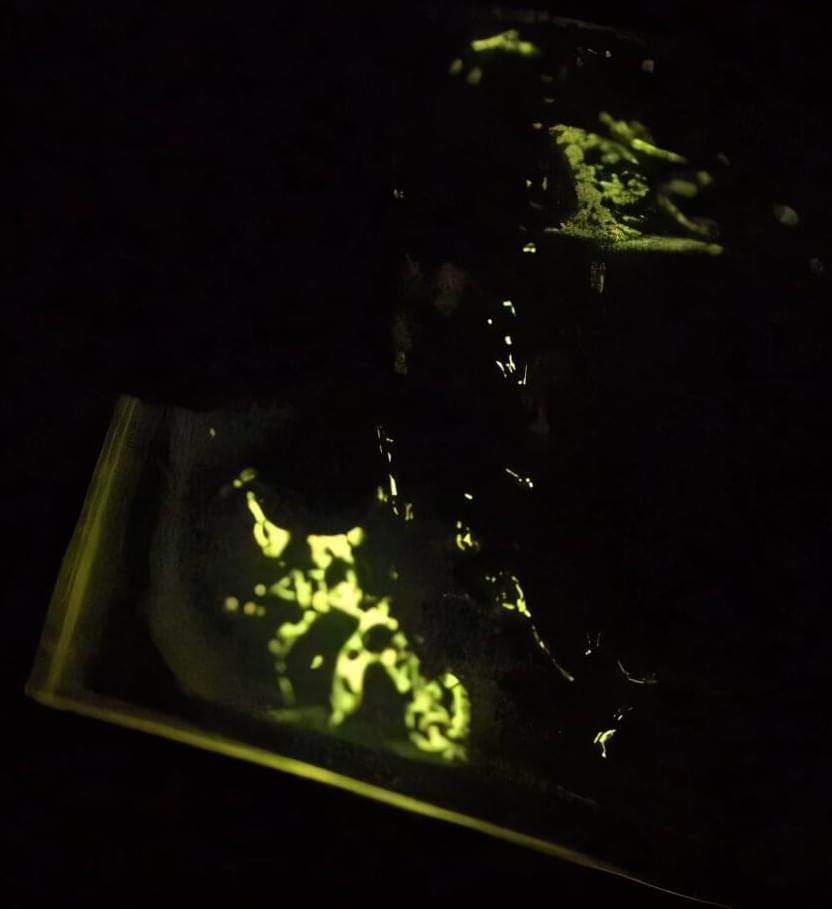In the 17th century, Francis Bacon described a simple experiment—scraping and fracturing hard sugar in the dark to see sparks of light. This phenomenon is called mechanoluminescence (ML) or triboluminescence (TL), the process of materials emitting light under mechanical stimulation, like grinding or crushing. Usually, ML properties of luminescent compounds are observed in rigid crystalline systems, which limits their real-world applications.
Now, researchers at the Okinawa Institute of Science and Technology (OIST) have found a way to generate ML in non-crystalline materials, bringing a new wave of potential applications in engineering, industrial safety and beyond.
“Mechanical stimulation of crystals causes fractures. As the crystals are damaged and break down in size, they also start to lose their ML properties, which vastly restricts their application. In crystals, ML is highly dependent on structure and packing, adding complex design requirements. That’s why we were interested in amorphous ML materials with longer-lasting luminescence,” explains Professor Julia Khusnutdinova, head of the Coordination Chemistry and Catalysis Unit at OIST.
